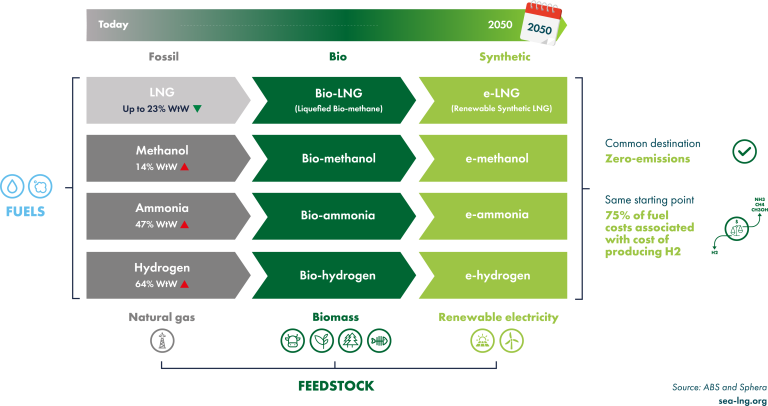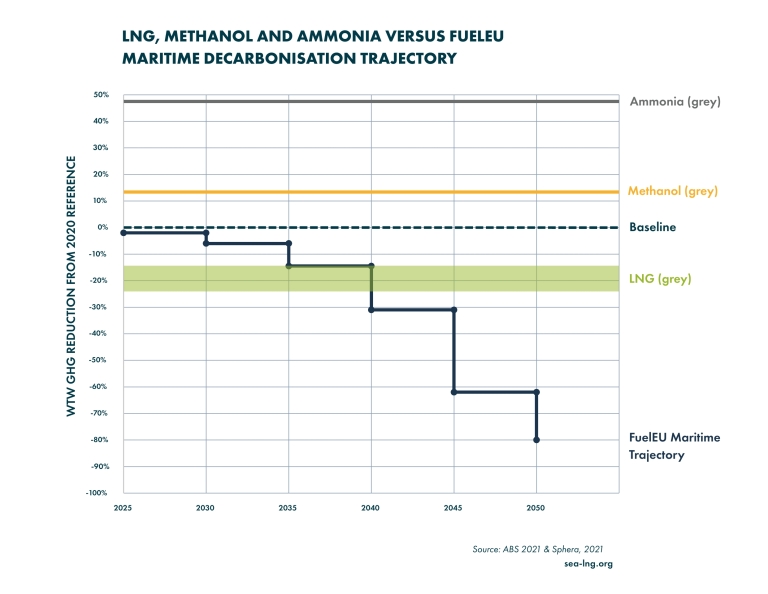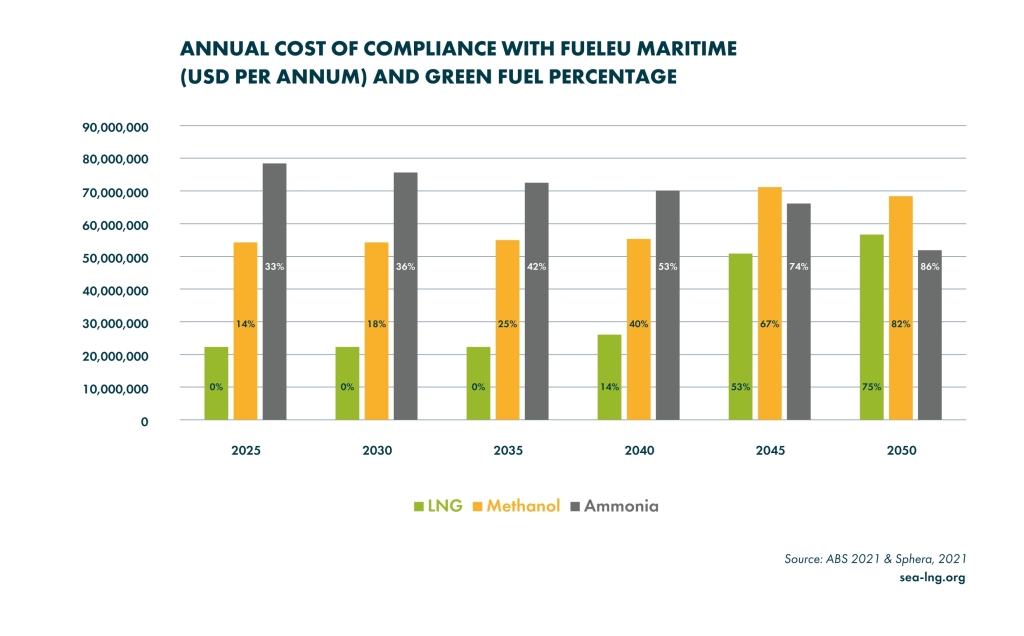SEA-LNG coalition has released a study in which it evaluates LNG (Liquified Natural Gas) and other fuels such as ammonia, hydrogen and methanol, on the industry’s path to net zero.
According to the study, almost all currently available alternative fuels including LNG, grey methanol and grey ammonia are produced from natural gas. While the different fuels share a common destination, their journeys begin from different starting points in terms of greenhouse gas (GHG) emissions.

To achieve the same emissions reduction as grey LNG, grey methanol and ammonia will need to be blended with significant volumes of very expensive, potentially scarce amounts of green methanol and green ammonia derived from sustainable biomass or renewable electricity, the study claims.
FuelEU Maritime compliance
FuelEU Maritime is a regulation designed to accelerate the maritime industry’s decarbonisation through the adoption of renewable and low-carbon fuels and technologies. It does so through the application of targets for GHG energy intensity reductions for the energy used on board ships from 2025 onwards.
According to SEA-LNG, ships fueled on grey methanol and grey ammonia will not be compliant with this new regulation. Grey Methanol is about 14% above the Very Low Sulphur Fuel Oil (VLSFO) baseline and grey ammonia, 47%.
Grey LNG, is some 20% below the VLSFO line. Grey Methanol and grey ammonia will need to be blended with significant volumes of green versions of these fuels simply to reach the GHG performance of VLSFO, let alone the proposed decarbonisation pathway. The study claimed that ships using grey LNG on the other hand will be compliant until 2039.

Cost
According to the study, the LNG pathway to compliance offers massively lower fuel costs than that for both the methanol and ammonia pathways, particularly in the first 15 years of the vessel’s life. The methanol pathway is approximately 2.5 times more expensive and the ammonia pathway, 2.5 to 3.5 times more expensive.































































